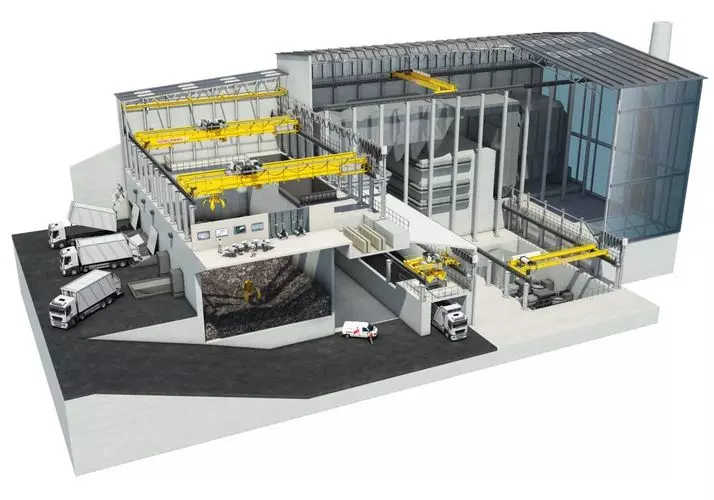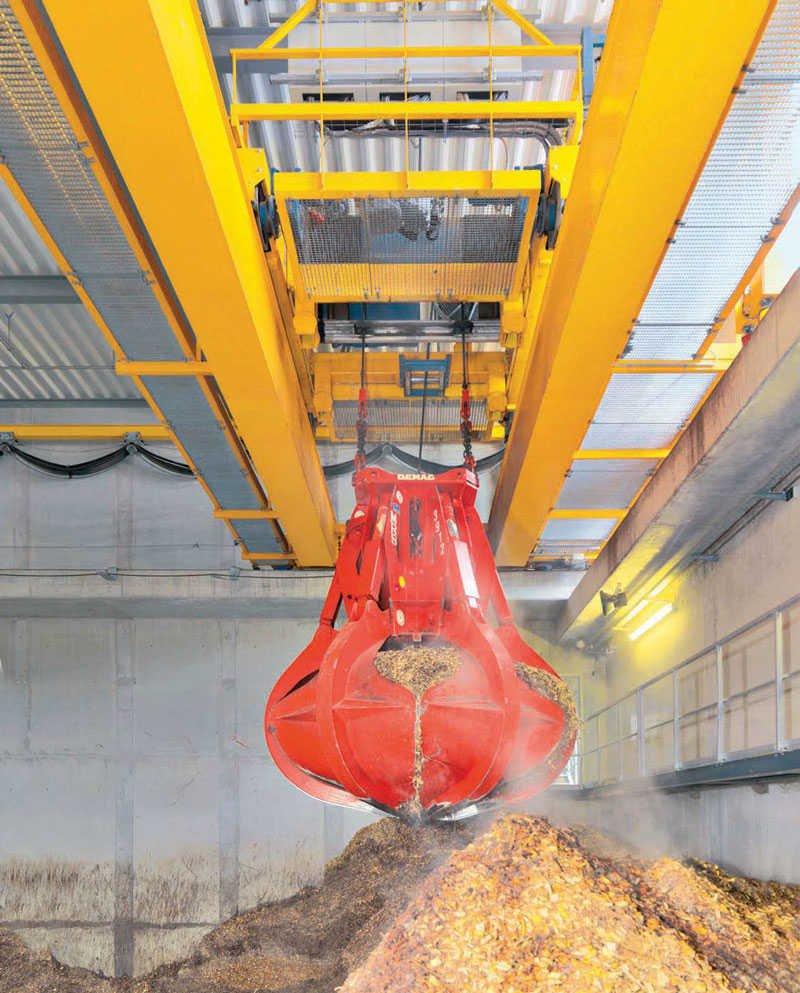Waste to Energy and Biomass
When you choose Dongqi Crane to equip and service your waste-to-energy-and-biomass facilities, you acquire a trusted source of global experience and knowledge, combined with local know-how to empower your lifting operations and increase your safety and productivity. We offer cranes, features and services designed to serve renewable energy production needs.

Turning waste or biofuel into energy is a complex process. Many of our engineers have extensive experience in waste and biomass handling so they understand the demands of reliable lifting technology.
Crane Equipment for Waste to Energy and Biomass industry
Overhead crane with grab: A grab crane plays a crucial role in modern incineration plants, where tight environmental guidelines apply and material handling must perform at maximum efficiency from the moment waste arrives, as the crane stacks, sorts, mixes and delivers it to the incinerator. Typically, there are two grab cranes above the waste pit, one of which is a backup, to ensure minimal downtime.
Straw bale handling cranes: A straw bale handling crane is designed to handle bales of hay at a power plant that uses straw as a fuel source. These cranes unload the bales from delivery trucks, move them into storage, and feed them into processing. Bales are usually rectangular and relatively dry, which makes them easier to handle. You should choose a straw bale crane based on the annual volume of straw pellets you intend to produce, the layout of the plant, your bale storage capacity and frequency of bale delivery.
Dongqi crane waste-to-energy equipment uses the latest in lifting technology to help you move your loads safely and efficiently in any working environment. Our long history has given us the experience and know-how to provide the right crane for your facility, backed up with local branches of a global service network to give you the confidence that spare parts and technical assistance are always close.
Expertise for Waste to Energy and Biomass industry
Modern waste-to-energy (WTE) power plants are ambitious and complex facilities, their size and output capacity growing rapidly, with a high demand for customization and automation. To be able to quickly adapt in this fast-changing environment, you need world-class experts who can help simplify the situation and guide you towards optimum solutions, not only for today but the future as well.
Customer Stories
A wood-fired combined heat and power station in Hamburg-Lohbrügge uses natural wood chips from forestry and landscaping work to generate around 13 million kilowatt-hours of electricity annually from renewable resources. The 60,000 megawatts of heat generated simultaneously are channeled to neighboring district heating plants, supplying more than 8,000 homes. The €13 million investment in the plant will reduce CO2 emissions by 23,000 tonnes per year.
The fuel is moved from the transfer point to the furnace via a crane. The double-girder bridge crane on site has a span of 16.4m, a hoist of 11t, and a lifting height of 24.5m. An 8 cubic meter multi-claw grab was installed. It is fully automated and the technology plays a key role in the energy production process.
One of the crane’s tasks is to control the motor-driven multi-claw grab. This grapple is designed for handling lumber as the material arrives at the mill in its natural and varied state. The unit reliably picks up loads ranging from fine shredded wood to small branches and compacted materials. About 32,000 tons of wood chips are supplied by truck each year. A minimum of 140 cubic meters of material must be processed per hour.

One thing that must be recognized is that due to the complexity of the work environment, every experience in this field may not be applicable to new projects, which places high demands on the abilities of factories and engineers.
We have collected a energy plant case located in Lyon, France.
RSS was contracted to proof load test the beams by Lab SA, based in Lyon, France, which constructed the building where the majority of the cranes are installed. The remaining three beams are located on a nearby stack and residue silo.
The main stack beam was 26m, the same height as the cantilevered beam at the top of filter bag house, with the residue silo a further 3m taller. Other heights of lift ranged from 3m to 10m.
Gary Coleman, site engineer at RSS, said: “We needed to complete the tests in line with the stringent requirements of the site. The beams within the penthouse area of the building were required for installing filler bags and a separate contractor required certification of the hoists and beams so they could use them. The contract included the inspection of chain blocks and trolleys as they were installed. Remedial works will be handled as required.
“The client specifically stated that no pulling of the steel structure is allowed anywhere on site. This meant we had to adopt a more complex testing method from start to finish, adding time, cost, and manual handling. We were recommended for the project following our success at a previous waste recovery project, but the two turned out to be very different.
“We carried out testing by using live loads (or weights). We transported weights in our vans to site—a 625kg [weight] and a little basket tare weight [weighing 34kg]. We also bolted a 5t SWL [safe working load] bracket into the concrete floor, held in place with four M12 x 120mm through bolts. Once we had completed testing, we used a grinder to cut off flush to the floor and hammered the remainder below floor level to ensure no trip hazard remained.”
